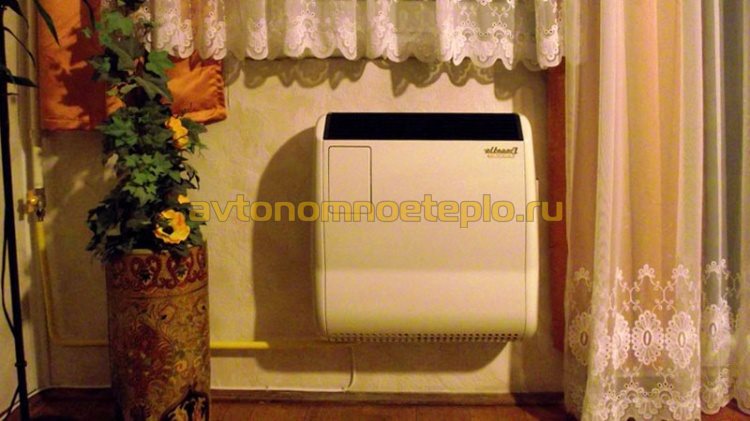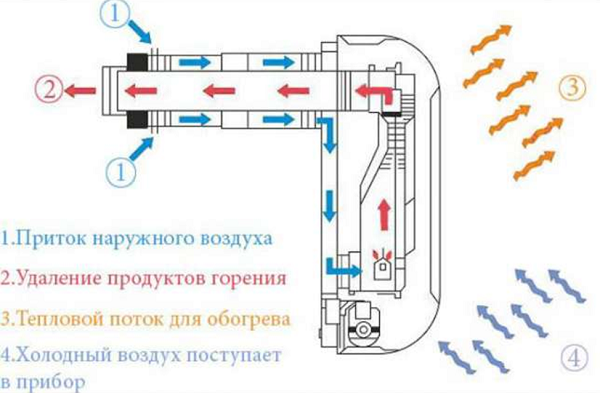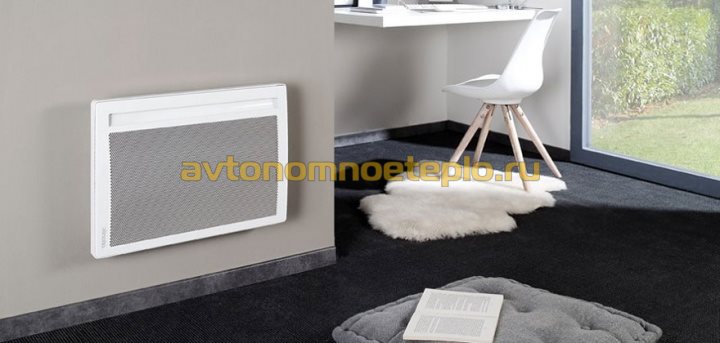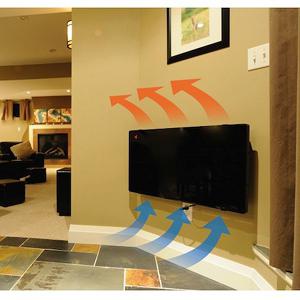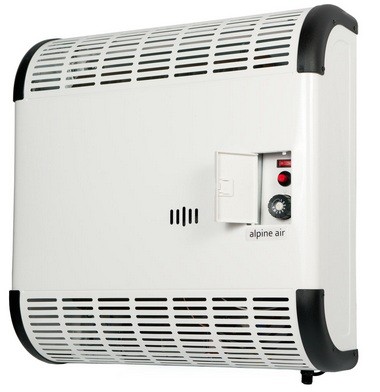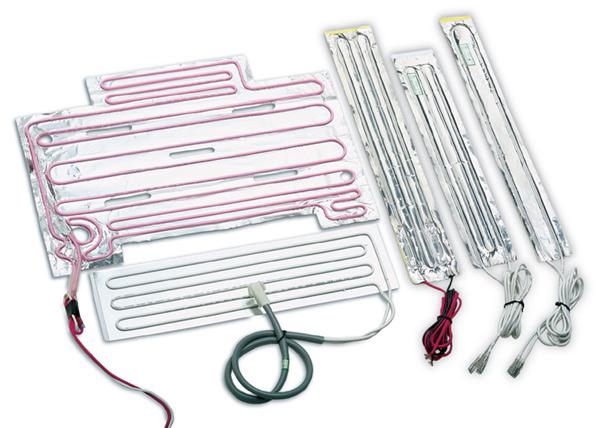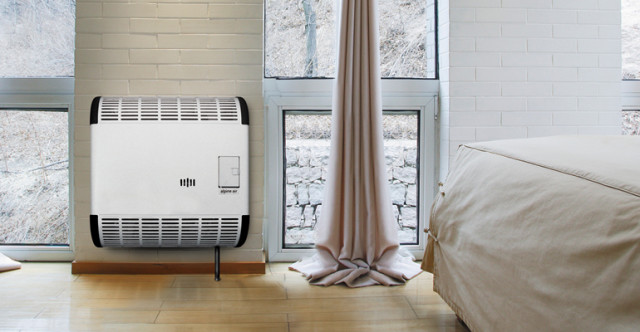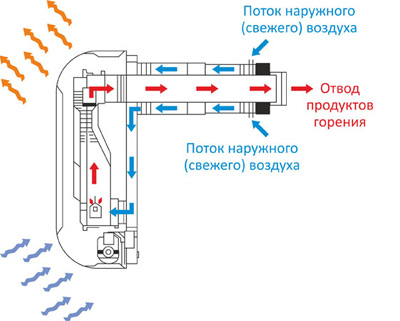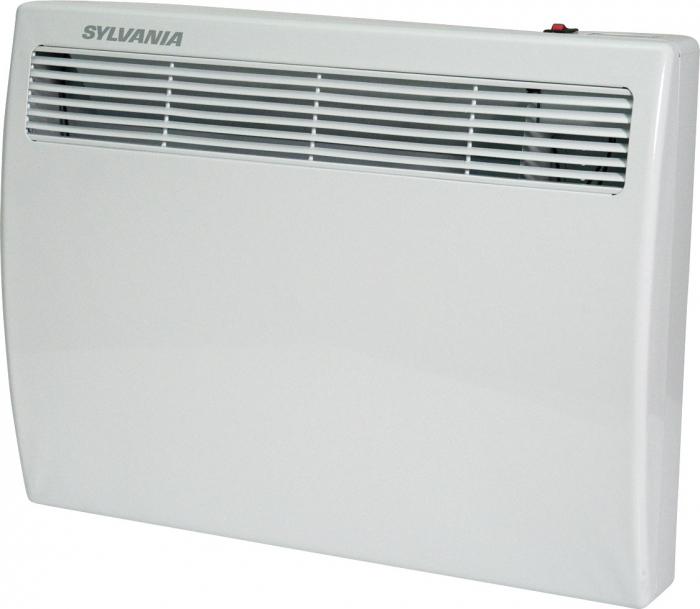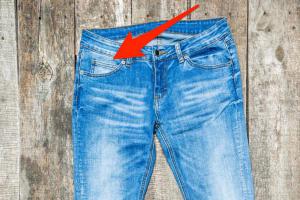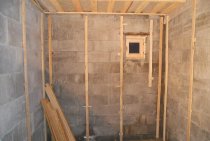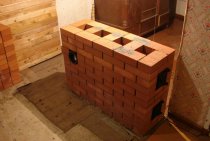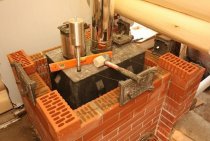inverter heater
Operating principle
The inverter, which is equipped with this type of device, converts alternating current into direct current, while changing the voltage and frequency. This physical process is called inversion. The inverter looks like a generator with periodic voltage. In form, it is similar to a discrete signal. Inverting has a strong influence on the power of the device, and also all electrical appliances with it become less noisy and more economical.
Advantages and disadvantages
This type of device has many advantages:
- Economical. When the inverter system of the device reaches the desired temperature level, the mechanism of the device does not turn off, but continues to work at low speeds. This leads to maintaining a favorable climate in the room. The heater does not require electricity for the on and off functions. During the use of the inverter, there is no such thing as "high current" for starting. When starting the device, the current is not more than the rated current, which has a positive effect on the life of the entire device. The device does not need to be constantly on and off. After all, these cycles significantly reduce the life of the device. Compared to conventional appliances, the energy saving is about 40%.
- Practical and productive. This device is able to heat even at very low temperatures, while the beneficial effect is expressed by a high coefficient. The heater during operation shows the ratio of the released heat to the energy expended, denoted as EER. This indicator of the device is equal to four. For example, at a flow rate of 250 W, you get more than 1 kW of heat. This is a good indicator.
- The heater during operation has high safety and environmental characteristics.
- The operation is carried out with a low noise level, this is due to a decrease in the rotation speed at partial load. Without a doubt, this indicator has a positive impact on the life of the consumer.
A large number of advantages of the device does not deprive it of disadvantages, but it is only one. This is a considerable cost of the heater compared to other similar devices.
Use in heating systems
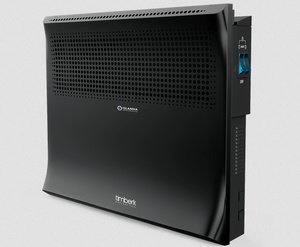
A conventional gas boiler these days is easily replaced by an inverter heater. Then the operation of the heating system with an embedded inverter device will be as follows: passing through the heater, electricity enters the boiler. In this case, the inverter boiler constantly generates induction current. If a power outage situation occurs, the boiler will continue to operate on battery power. The heater includes a magnetic part and a heat exchanger.
Frequently asked questions about electric convectors
Which convectors are more efficient - high or low?
The efficiency of the device does not depend on its size, but on its power. All kinds of "form factors" of equipment are created, first of all, for the convenience of fitting it into various interiors.
Is it dangerous to leave the convector unattended?
Definitely not.If the electrical wiring in your home can handle the combined power of the appliances running at the same time, you have nothing to worry about.
Can a convector be used as the main source of heating?
As a rule, yes. It all depends on the specific model of equipment and manufacturer's recommendations.
Is an electric convector the right choice for a child's room?
Quite. Among the products of most popular manufacturers there are units designed specifically for children's rooms - with a durable body, with streamlined shapes, without sharp corners. The holes in them are as small as it is, in principle, possible - all so that the child cannot put anything inside.
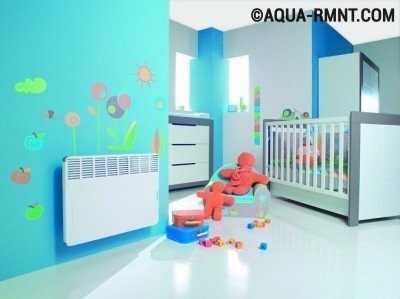
How to install a convector
Installation guidelines, requirements and limitations are detailed in the instruction manual. In particular, it states:
- Installation of a gas convector in a wooden house. During operation, the body heats up to 50-55°C. It is necessary to isolate wooden surfaces in contact with heating parts of the structure. The rules for installation in a wooden house prescribe the manufacture of fire breaks in the roof. If a coaxial pipe is used, insulation is not required at the point of passage through a wooden wall. The surface of the coaxial chimney heats up slightly, due to the special design of the burner and pipe.
- Location from the floor. Air heating of a country or residential building has certain features that affect the heating efficiency. To ensure maximum performance, install the convector as close to the floor as possible. As a result of this solution, the intensity of the circulation of convection flows increases and the efficiency of the equipment increases.
- The gas pipe is brought to the heater exclusively along the street. A shut-off valve must be installed at the connection point.
A test run is carried out in the presence of a representative of the gas service. A corresponding note is made in the convector documentation.
Which is better, a gas convector or a boiler
It all depends on the technical characteristics of the building and the features of its operation. The installation of the convector requires less time and material resources.
Air heating is recommended for use in country houses that are not heated in the winter season. During installation, there is no need to use a water circuit, it is possible to heat the building only from time to time. Even at a negative temperature in the room, you can warm up the room in 20-30 minutes.
A gas convector for a house on bottled gas is inferior to a boiler connected to the main pipeline in terms of efficiency, but superior in functionality. The choice of an air heater is justified in the absence of gasification. On a fully charged cylinder, the heater will operate for approximately 10 days.
The convector heats the room better and faster and spends less fuel for this, but its efficiency is limited by the properties of convection flows. The intensity of heating decreases as obstacles appear: walls, furniture, etc.
For heating a country house or small rooms, a convector-type heater is best suited. But for residential heated houses with large rooms, it is better to install a traditional gas boiler.
Calculation of power and temperature of a warm water floor
Heater device and principle of operation
A gas heat convector is a device that is able to generate heat by burning gas. The design of the unit is quite simple.
- Burner. An igniter is connected to it.
- A heat exchanger whose task is to give off heat to the air passing through it. To heat more air, the heat exchanger is made ribbed (to increase the area).
- System for removal of combustion products.
- The automation system is installed for safety purposes and turns off the unit in case of problems in operation.
- The thermostat maintains the set temperature in the room.
- The case serves to protect the device and is made of metal coated with heat-resistant paint.
The figure below shows the device of a gas convector.
The principle of operation of the device is that the gas, when burned in the chamber, heats the heat exchanger. The air flow, passing through the lower openings of the unit, moves through the heat exchanger, takes heat and exits heated into the room through the upper openings. In the meantime, the products of gas combustion are removed from the chamber using a double-walled pipe (coaxial). Through it, fresh air enters the apparatus from the street to maintain the combustion process.
The principle of operation of the convector
Types of heating electric convectors
When choosing climate technology, it is important to consider that electric convectors may differ from each other in the following characteristics:
- Attachment type.
- The heating element used.
You should also pay attention to the manufacturer of the product and the cost of electricity.
Types of electric convectors, according to installation features
Heating appliances operating on the principle of air convection can be divided into three categories.
Wall mounted. Wall type convectors are the most efficient. Location on the wall facilitates the process of convection and increases the efficiency and heat transfer of heaters.
Floor version - used as an additional source of heat. Models with a built-in fan differ in performance. A convector with forced air circulation cannot boast of quiet operation, but warms up the air well.
Universal models - can be installed on the floor and mounted on the wall, using special fasteners. When choosing, you should pay attention to the presence of wheels in the kit. By installing the wheels on the body, you can easily move the heater to any place in the room.
The main advantage of the convector is the low heating of the device body. This allows you to install a heater for heating a wooden house.
Classification of convectors according to the heating element used
In total, three types of heating elements are used. The design of the heating element affects the possibility of using the heater.
- Needle heating element - a simple design, is a chromium-nickel heating filament located in a dielectric plate. It is covered with a special insulating varnish on top. A heater with a needle heating element is not suitable for wet rooms, since the heating element has absolutely no protection against the ingress of water, steam, condensate and other liquids. As a rule, budget models are equipped with a needle heating element.
- Tubular heating element - is made in a waterproof design. The design consists of a steel tube filled with a heat-conducting backfill, which at the same time is an insulator. To increase heat transfer, heat-distributing ribs are fixed on the sides of the heating element, which increase convection. The heaters are equipped with protection against overheating. The disadvantages of a tubular heating element are that the electric convector heats up for a long time. The operation of the appliance may be accompanied by sounds resembling the crackling of burning wood.
- Monolithic heater - the most economical electric convectors for heating a private house use a monolithic heating element.The body of the heating element has no seams, the work does not accompany extraneous noise. If you plan to make the electric heating of the apartment with convectors the main one, then models with a monolithic heating element are the best solution. During operation, minimal heat loss is observed. The heater effectively and quickly heats the room. The only noticed drawback of a monolithic heating element is the high cost of the device.
For space heating using an electric convector, it is better to choose devices that have a tubular or monolithic heating element and are equipped with a built-in electronic or programmable thermostat.
Heat exchanger material
The operation of the convector is based on the combustion of gas in the thermal chamber of the unit, while the heat exchanger is subjected to powerful thermal effects from the inside, its burnout quickly disables the convector. Therefore, it is natural that the material of manufacture should be as strong and stable as possible.
Here the undoubted leader is cast iron. The cast iron heat exchanger is thermally stable, the service life of such convectors is up to 50 years. Another plus of a cast-iron heat exchanger is a more even distribution of heat and delayed cooling. The downside is the large mass and high price.
Convectors with a steel heat exchanger are lighter and cheaper than cast iron ones.
When buying, you should pay attention to the quality of steel, such a gas convector lasts at least 20 years
Heating convector, what is it and how does a detailed review work
A little has already been said about the principle of operation, now let's look in more detail. Any electric convector is based on the principle of movement of air masses in the room. We all know that cold masses sink down, while warm masses are slightly higher. The developers of heaters took advantage of this by placing holes for cold air in the lower part of the device. The air-type heating element heats up quickly, which is its main feature. The most important thing is that the heated air is lighter and does not have any harmful inclusions. Warm masses exit through the central and upper openings in the body. This solution allows you to increase the temperature in the room in the shortest possible time. Often, only a few minutes are enough to heat a small room with a medium-power convector.
How to choose a gas convector
You should pay attention to the technical characteristics of the heaters. The best option is to choose a convector with a cast-iron heat exchanger of a closed type and a programmable control unit
When choosing equipment, you will need to consider the following:
- Power calculation. When heating the room, air convection is used. Therefore, heaters are only effective in limited spaces. For each room you will need to install a separate convector. The power calculation is carried out according to the formula 100 W per 1 m².
- Housing type. For an apartment, heaters with a closed combustion chamber and the output of combustion products through a coaxial chimney are suitable. You can put any type of equipment in your house. But when installing a heater with a closed chamber, it is necessary to take care of a constant and intensive supply of fresh air.
- Fuel type. It is forbidden to install a gas heating convector on liquefied gas in an apartment of a multi-storey building, due to the high explosion hazard of cylinders.
All convectors are initially manufactured with the ability to connect to the main gas pipeline. If you plan to connect the gas convector to the cylinder in the future, you need to purchase a special gearbox (in some modifications it is included).
Types of gas convectors
To choose a suitable convector, you should learn about the main differences between existing equipment, the pros and cons of modifications.
How can heaters be classified?
- Installation method - there are wall and floor models. The former take up less space, are lightweight and efficient, and are limited in performance (maximum power 10 kW). For heating a garage, rooms with a large area, it is better to choose a floor model. The heaters are heavy due to the increased heat exchanger. The performance of floor convectors reaches several mW (industrial versions).
- Removal of exhaust gases. In a conventional convector, an open gas combustion chamber is installed. The principle of operation of the device is somewhat reminiscent of a simple wood-burning stove. The design has several drawbacks - it burns oxygen, requires good ventilation of the room, as well as the manufacture of a complex smoke exhaust system. New generation convectors use a closed combustion chamber. Instead of a chimney, a coaxial pipe is used. The air intake is carried out from the street, therefore, in the process of work, oxygen in the room is not burned. Systems with a closed combustion chamber have only one drawback - the cost is 30-50% more than that of classic models.
- heat exchanger material. The principle of operation of the convector is associated with a constant thermal effect. One of the most common causes of heater failure is the burning of the chamber walls. The heat exchanger is made of steel or cast iron. The crystal structure of the latter metal provides a long service life (about 50 years) and high heat transfer. The steel chamber will work for about 10-15 years.
- Fan. High power convectors are equipped with a forced air circulation system. Budget household models may not have a fan.
- Gas type. Models are designed to work on any type of "blue" fuel. A natural gas convector can also run on propane. A special adapter kit is required for conversion.
- Control automation. Budget models are equipped with conventional thermostats. The programmable control unit allows you to control the temperature in the room and set the required heating mode.
The cost of a gas convector depends on the material of the heat exchanger, the availability of an adapter kit, as well as the characteristics of the control unit.
Purpose
The convector working on natural gas is intended for heating of premises for various purposes. In this case, combustion takes place in a closed chamber, air is supplied from the street and combustion products are discharged there. The heat released during the combustion process is transferred to the combustion chamber body and heat exchanger, and then to the indoor air. Due to the rapid heating, the air rises, making room for the colder one, maintaining an active convection process throughout the room.
A gas convector warms up the air faster and more actively than its electric counterparts, or even more so converter-type radiators for a water heating system. This is due to the higher surface temperature of the heat exchanger and the increased rate of heat transfer from the combustion chamber.
A gas convector is an excellent solution in the following situations:
- Primary heating for a small room or cottage with one or two adjoining rooms.
- As a replacement for the solid fuel stove, which was previously used to heat the house.
- For quick heating and maintaining a comfortable temperature in the garage, utility room, small country house.
- As an addition to the central heating system in rooms where the installation of a water radiator is difficult (basement and semi-basement, attic, veranda, etc.).
- For heating greenhouses.
As a replacement for the main heating, a gas convector is only suitable for small houses or individual rooms.The effectively heated area is easily calculated based on the models of gas convectors available in terms of power. On sale, devices with a power of 2.5-6 kW are more common, less often up to 12 kW. In the first case, the convector is enough to heat a room up to 50 m2. The most powerful models are only in demand for industrial and public premises up to 100 m2.
gas convector
A wide variety of devices and heat sources are now used for heating premises for any purpose. All possible versions and principles of operation are involved, from electric heaters, gas boilers and up to the use of geothermal energy. Among this variety there is also a heating gas convector. This device looks like a regular radiator, only a little larger and runs on main natural or liquefied gas. It does not heat water with subsequent distribution to radiators, the heat from gas combustion through the heat exchanger immediately enters the room.
It is interesting to understand the features of this type of heaters and determine the scope of its application based on the advantages and disadvantages of a gas convector.
About the advantages of electric convectors
It is impossible not to highlight this aspect, since it is necessary to clearly understand what are the pros and cons of such equipment. The main advantage is that the efficiency reaches 95%. This means that the electricity consumed is almost completely converted into heat. Silent operation is another important point. For many, this factor is decisive, for obvious reasons. If you come from work to a cold apartment, then you need to heat it up as soon as possible. A convector is the best solution to this problem. The device does not need to spend time heating the media. It is enough to wait just one minute, and the unit will work with the set temperature. It is impossible not to say about the cost of equipment, which is much less than that of gas boilers, oil heaters, etc.
Some general information about the device
In Europe, many people have been using electric heating for quite a long time. In our country, due to high electricity prices, this is problematic. Nevertheless, you need to warm up somehow, and therefore buying a convector is one of the best solutions. The principle of operation of the device is quite simple. The bottom line is the natural convection of air passing through the heating element. This type of heating equipment has a small shape, which allows you to place it where it is convenient. Today there are both floor and wall options. The shape is in most cases rectangular, although there are also square ones, etc. So what are convectors, you ask? This is a device that has many holes in its body. Cold air enters the side and lower ones, then it heats up and exits through the holes on the front side.
How does a convector work?
The principle of operation of a gas convector is based on a change in the properties of a gas with an increase in its temperature.
Mounted gas convector
Passing through the heat exchanger of the convector, the air heats up, becomes lighter and rises higher, and new portions of cold air come in its place. This movement of air layers is called convection, hence the name of the device.
The internal structure and principle of operation of this heater unequivocally determine the method of its placement: it is best to install the convector as low as possible, then the efficiency of its work will be the greatest.
The fact is that the coldest air, due to its density and greater weight, is always at the bottom, and with this configuration it will be heated first of all.In practice, they most often try to mount a gas heating unit under a window, where heat loss is usually maximum.
The principle of operation of the gas convector
The gas heater is often equipped with a tangential fan. Its installation helps to increase the rate of supply of heated air and significantly speed up the process of heating the room. In addition, some expensive models have an increased thickness of the case walls and therefore are able to accumulate significant amounts of heat, and then transfer it to the surrounding space using thermal radiation. Such devices combine the advantages of conventional radiators and convectors and provide the highest quality heating.
Conclusion
As you can see, it is not so difficult to figure out what a convector is. A heater of this type has a number of advantages, which was also mentioned. Currently, there are many models on the market that are equipped with convenient controls and do not require constant human attention. Thanks to the successful implementation of security requirements, you can be completely calm. This is due to the fact that modern sensors are installed that fully control unforeseen processes, this is what an electric convector is good for. The heater will not work without light, but this is understandable. Although this can hardly be called a disadvantage, because even modern gas boilers are equipped with sophisticated electronics, so they also turn off when the power goes out. Efficiency and speed - this is an electric convector. You know what it is and how the device works, so you can safely make a choice in favor of one or another model.
9 Famous Women Who Have Fallen In Love With Women Showing interest in someone other than the opposite sex is not unusual. You can hardly surprise or shock someone if you admit it.
How to look younger: the best haircuts for those over 30, 40, 50, 60 Girls in their 20s don't worry about the shape and length of their hair. It seems that youth was created for experiments on appearance and bold curls. However, already
Why do you need a tiny pocket on jeans? Everyone knows that there is a tiny pocket on jeans, but few have thought about why it might be needed. Interestingly, it was originally a place for Mt.
Our ancestors slept differently than we do. What are we doing wrong? It's hard to believe, but scientists and many historians are inclined to believe that modern man sleeps in a completely different way from his ancient ancestors. Initially.
What does the shape of your nose say about your personality? Many experts believe that by looking at the nose, you can tell a lot about a person's personality.
Therefore, at the first meeting, pay attention to the nose of an unfamiliar
13 Signs You Have the Best Husband Husbands are truly great people. What a pity that good spouses do not grow on trees. If your significant other does these 13 things, then you can.
